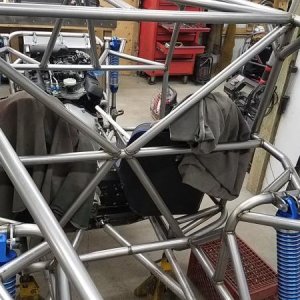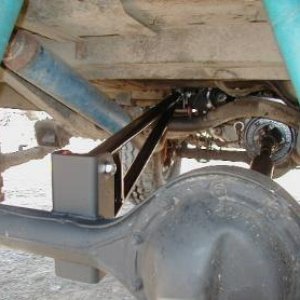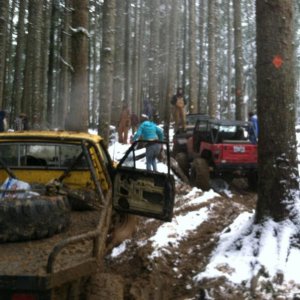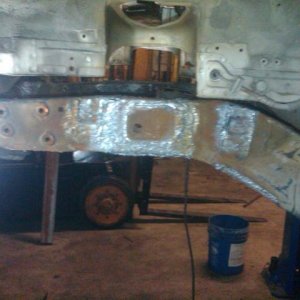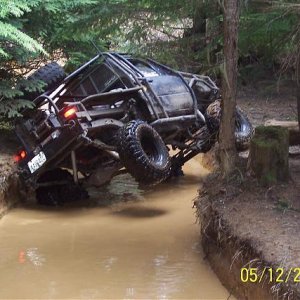Interesting info for those who can read
if I can get this attatchment to work
RCW 46.04.571Street rod vehicle.
"Street rod vehicle" is a motor vehicle, other than a motorcycle, that meets the following conditions:
(1)(a) The vehicle was manufactured before 1949, (b) the vehicle has been assembled or reconstructed using major component parts of a motor vehicle manufactured before 1949, or (c) the vehicle was assembled or manufactured after 1949, to resemble a vehicle manufactured before 1949; and
(2)(a) The vehicle has been modified in its body style or design through the use of nonoriginal or reproduction components, such as frame, engine, drive train, suspension, or brakes in a manner that does not adversely affect its safe performance as a motor vehicle or render it unlawful for highway use, or (b) the body has been constructed from nonoriginal materials or has been altered dimensionally or in shape and appearance from the original manufactured body.
RCW 46.04.251Kit vehicle.
"Kit vehicle" means a passenger car or light truck assembled from a manufactured kit, and is either (1) a complete kit consisting of a prefabricated body and chassis used to construct a new vehicle, or (2) a kit consisting of a prefabricated body to be mounted on an existing vehicle chassis and drive train, commonly referred to as a donor vehicle.
(ORV Rigs)
RCW 46.09.040Use permit prerequisite to operation.
Except as provided in this chapter, no person shall operate any off-road vehicle within this state after January 1, 1978, unless the off-road vehicle has been assigned an ORV use permit and displays a current ORV tag in accordance with the provisions of this chapter: PROVIDED, That registration and display of an unexpired ATV use permit shall be deemed to have complied with this section.
RCW 46.09.050Vehicles exempted from ORV use permits and tags.
ORV use permits and ORV tags shall be required under the provisions of this chapter except for the following:
(1) Off-road vehicles owned and operated by the United States, another state, or a political subdivision thereof.
(2) Off-road vehicles owned and operated by this state, or by any municipality or political subdivision thereof.
(3) Off-road vehicles operated on agricultural lands owned or leased by the ORV owner or operator.
(4) Off-road vehicles owned by a resident of another state that have a valid ORV permit or vehicle license issued in accordance with the laws of the other state. This exemption shall apply only to the extent that a similar exemption or privilege is granted under the laws of that state.
(5) Off-road vehicles while being used for search and rescue purposes under the authority or direction of an appropriate search and rescue or law enforcement agency.
(6) Vehicles which are licensed pursuant to chapter 46.16 RCW or in the case of nonresidents, vehicles which are validly licensed for operation over public highways in the jurisdiction of the owner's residence.
(Special motor vehicles-info)
WAC 204-90-030Definitions.
(1) Special motor vehicles: Passenger vehicles, multipurpose passenger vehicles, trucks and buses with a gross vehicle weight rating of 10,000 pounds or less equipped with two or more axles having at least two wheels per axle and which are intended for use on public highways. The term "special motor vehicle" shall include the following types:
(a) Type I: Vehicles that retain or are exact replicas of the original body configuration of a recognized vehicle manufacturer with changes made to any of the equipment items specified in this chapter. This type shall also include vehicles that have been modified from a recognized vehicle manufacturer's original body chassis configuration but that retain the general appearance of the original body chassis.
(b) Type II: All special motor vehicles which are custom built with fabricated parts or parts taken from existing vehicles excluding Type I vehicles.
(c) Enclosed vehicle: Every Type I and Type II vehicle having a solid enclosed compartment for occupants as compared to an open or "soft top" convertible vehicle.
(2) Recognized manufacturer: A person, firm, copartnership, association, or corporation who is or has engaged in the business of manufacturing motor vehicles intended for use on the public highways and offered for sale in interstate commerce.
(3) FMVSS: Federal Motor Vehicle Safety Standard.
Notwithstanding any other provisions of law, a vehicle or exact replica of a vehicle manufactured prior to 1968 owned and operated primarily as a collectors item and which has been restored to the original configuration and specifications of a recognized manufacturer is exempted from the requirements of this chapter.
WAC 204-90-040Body requirements.
(1) Defroster and defogging devices: Every enclosed special motor vehicle shall be equipped with a device capable of defogging and defrosting the windshield area. Vehicles or exact replicas of vehicles manufactured prior to January, 1938, are exempt from this requirement.
(2) Door latches: Every enclosed special motor vehicle equipped with side doors leading directly into a compartment that contains one or more seating accommodations shall be equipped with door latches which firmly and automatically secure the door when pushed closed and which allow each door to be opened both from the inside and outside.
(3) Hoodlatches: A front opening hood shall be equipped with a primary and a secondary latching system to hold the hood in a closed position.
Hoods are optional equipment on vehicles defined as street rods and kit vehicles by the Washington state patrol vehicle inspectors.
(4) Enclosed passenger compartment: A special motor vehicle with an enclosed passenger compartment and powered by an internal combustion engine shall be constructed to prevent the entry of exhaust fumes into the passenger compartment.
(5) Floor pan: A special motor vehicle shall be equipped with a floor pan under the entire passenger compartment capable of supporting the weight of the number of occupants that the vehicle is designed to carry.
(6) Bumpers: A special motor vehicle shall be equipped with a bumper on both the front and rear of the vehicle with the exception of motor vehicles where the original or predominant body configuration, provided by a recognized manufacturer, did not include such bumper or bumpers in the design of the vehicle. For the relevant model year, bumpers must accommodate recognized manufacturer impact absorption systems per applicable Society of Automotive Engineers (SAE) Bumper Standards or equivalent standards.
Bumpers are optional equipment on vehicles defined as street rods and kit vehicles by the Washington state patrol vehicle inspectors.
Bumpers, unless specifically exempted above, shall be at least 4.5 inches in vertical height, centered on the vehicle's centerline, and extend no less than the width of the respective wheel track distances. Bumpers shall be attached to the vehicle in a manner equivalent to the original manufacturer's installation. Bumpers shall be horizontal load bearing and attach to the vehicle frame to effectively transfer energy when impacted.
The maximum bumper heights will be determined by weight category of gross vehicle weight rating (GVWR) measured from a level surface to the highest point on the bottom of the bumper. For vehicles exempted from the bumper requirement for the reasons stated above, a maximum frame elevation measurement shall be made to the bottom of the frame rail. Maximum heights are as follows:
Front Back
Passenger Vehicles 22 Inches 22 Inches
4,500 lbs. and under GVWR 24 Inches 26 Inches
4,501 lbs. to 7,500 lbs. GVWR 27 Inches 29 Inches
7,501 lbs. to 10,000 lbs. GVWR 28 Inches 30 Inches
Adding an additional bumper will not meet the above requirements.
(7) Fenders: All wheels of a special motor vehicle shall be equipped with fenders designed to cover the entire tire tread width that comes in contact with the road surface. Coverage of the tire tread circumference shall be from at least 15° in front and to at least 75° to the rear of the vertical centerline at each wheel measured from the center of the wheel rotation. At no time shall the tire come in contact with the body, fender, chassis, or suspension of the vehicle. Street rods and kit vehicles which are more than forty years old and are owned and operated primarily as a collector's item need not be equipped with fenders when the vehicle is used and driven during fair weather on well-maintained, hard-surfaced roads.
(8) Frame: A special motor vehicle shall be equipped with a frame. If an existing frame from a recognized manufacturer is not used and a special frame is fabricated, it shall be constructed of wall box or continuous section tubing, wall channel, or unitized construction capable of supporting the vehicle, its load, and the torque produced by the power source under all conditions of operation.

